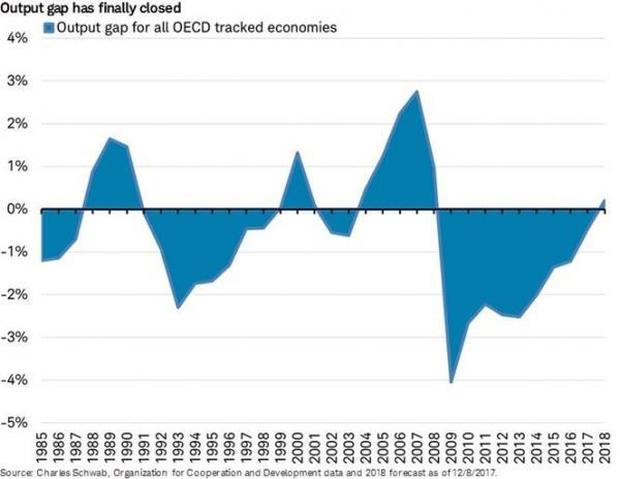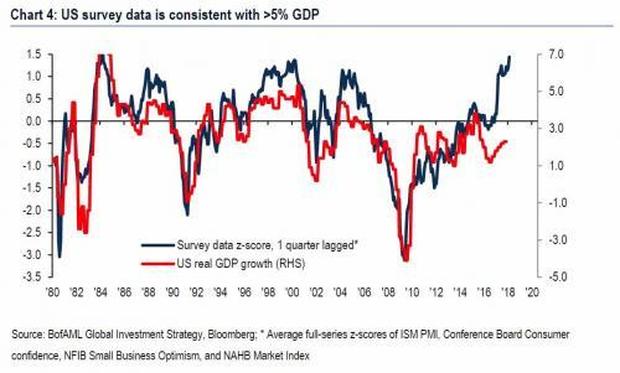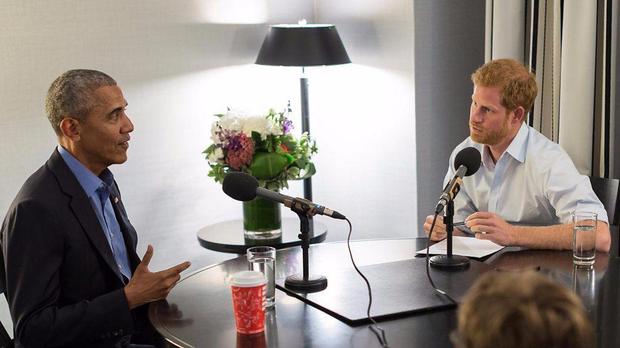Things could hardly look better for the average investor. Monday brought yet another powerful surge in stock prices as all three major US benchmarks notched new record highs, following Friday’s all-time highs. Monday marked 2017’s 70th record-high close for equities — itself a new record.
Investors are clearly stoked as Congressional Republicans look to be on the verge of passing a major tax cut. The economy is revving up. The labor market is tight, benefiting workers. And confidence surveys show off-the-charts enthusiasm.
But are any buyers left to push stock prices higher? And at what point does sentiment shift? After all, the outlook for 2018 is less about the low-inflation/solid-growth “Goldilocks” economy the US has enjoyed and more about the specter of more aggressive monetary policy tightening from the Federal Reserve.
The latest Flow Show report from Bank of America Merrill Lynch showed US equity inflows totaled nearly $8 billion for the week ending Dec. 13 — the most in 26 weeks. Large-caps saw their largest inflows in 33 weeks. Value stocks enjoyed their largest inflow in 36 weeks.

According to JPMorgan Chase (JPM), that pushes US household equity allocations to levels that have been exceeded only 6 percent of the time (table above). For US mutual funds, current equity allocations have been exceeded only 2 percent of the time. Other measures of equity positioning — including market debt and sovereign wealth funds — are at never-been-seen-before levels.
JPMorgan analysts warn that “there is only so much the market can rally if equity investors are already near maximal allocations.” The catalyst for investors to dive into stocks? President Donald Trump’s surprise electoral victory, which ushered in the promise of lower taxes, less regulation and increased spending.
Still, a bit more upside is possible.
UBS (UBS) strategist Keith Parker estimated last week that just 40 percent of the tax cut has been priced into stocks because a surge in mergers, acquisitions and buybacks is likely to follow actual passage of the tax legislation. Analysts from Credit Suisse (CS) echo this sentiment.
Separately, the National Federation of Independent Business survey of small businesses showed the second-highest level of optimism in the index’s 44-year history and the highest level in 34 years. And with bitcoin surging toward $20,000 on Sunday, enthusiasm is so thick, you could cut it, bag it and sell it.

What then, if anything, should investors be watching for heading into 2018 as possible party spoilers? According to a growing consensus on Wall Street, the answer includes some combination of inflation, more aggressive Fed tightening, bond market turmoil and a downturn in China.
Producer price inflation is building in the supply chain, based on recent data, but it has yet to show up in consumer-level data. That could soon change. Bank of America Merrill Lynch (BAC) analysts noted that survey data — including those covering small businesses, manufacturing, homebuilders and consumers — are consistent with GDP growth surging to upwards of a 6 percent annual rate (chart below).
This would come at a time when the economy is already running near its full capacity, with the post-recession potential GDP deficit now closed (chart above) and the job market near maximum. Inflation is the likely result, forcing the Fed into a more quicker pace of interest rate hikes than the market currently expects — just three quarter-point increases over the next three years.

Higher interest rates will hit junk bonds hard, where valuations are frothy. In Europe, interest rates are actually below comparable Treasury bonds, which is incredible. According to research by the Bank of England, since 1925 the single largest reason for bond market turmoil isn’t fiscal deficits or faster economic growth. It’s inflation.
Faster Fed tightening would turn off the flow of global dollar liquidity, which would hurt Chinese borrowers carrying loans in dollars. Moreover, the People’s Bank of China has lately been shadowing the Fed’s rate hike path in an effort to keep currency volatility low. But that’s causing interbank lending rates to spike to worrisome levels.
I’ll distill it down to this: Keep an eye on inflation and junk bonds, tracking relevant exchange-traded funds like the Barclays Capital High Yield Bond Fund (JNK) and the iBoxx $ High Yield Corporate Bond Fund (HYG) in 2018. These will be the canaries in Wall Street’s coal mine. And their downturn will be a clear signal to book profits and trim equity market holding.
© 2017 CBS Interactive Inc.. All Rights Reserved.

